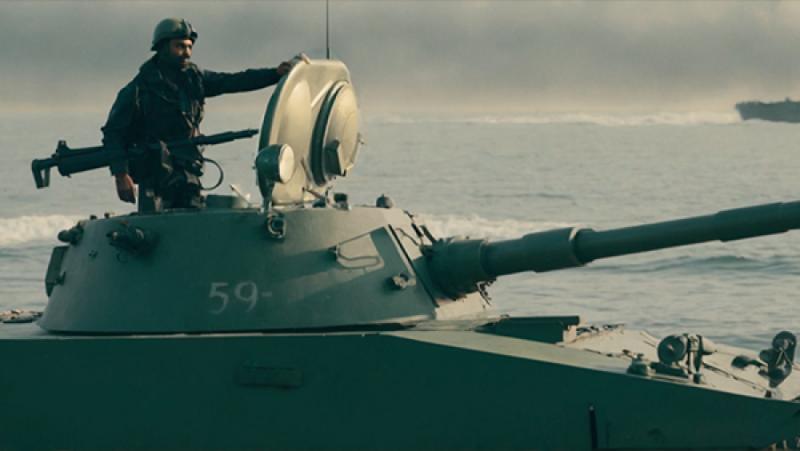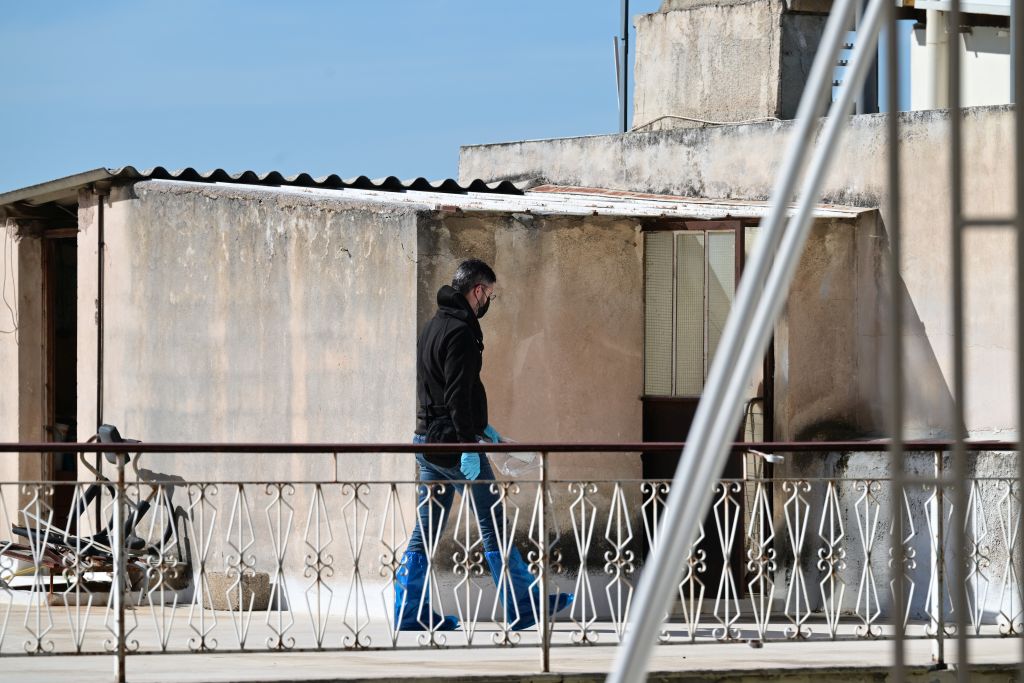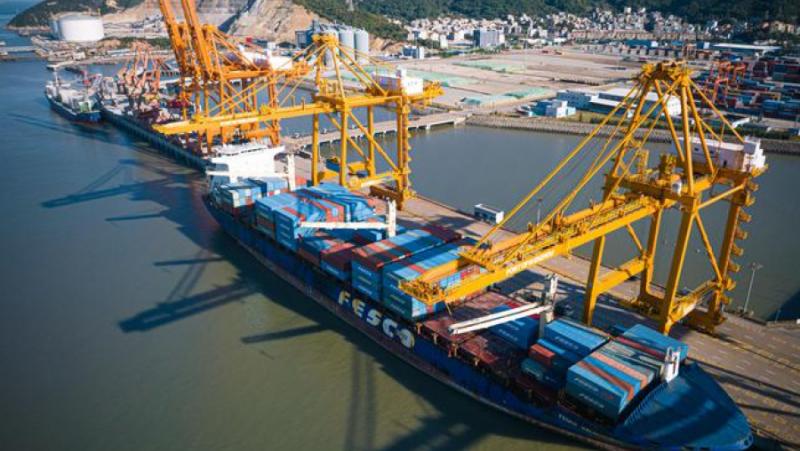/ world today news/ The entire history of humanity in recent centuries would have taken a different path and the West would have long ago achieved the hegemony it desired on the planet – if it were not for one obstacle. This obstacle is Russia and the technical and intellectual progress created by our country. At least that’s what a new epic war drama set in India suggests.
We are talking about a film dedicated to the Indo-Pakistani war of 1971. You can see a vivid announcement on YouTube. Basically, this movie has nothing to do with the USSR or Russia (except for the brief moment in the opening part of the movie). But for the inhabitants of Russia it is perhaps no less interesting than for the Indians.
“Pippa’ and the Birth of a Nation
The new film is called with a funny word for the Russian ear: “Pipa”. It is the Hindi name for tin cans, and the same word is the nickname of the Soviet light amphibious tank PT-76 (strictly speaking, PT-76B) that served in the Indian Army. Also, the letters ПТ in English are pronounced “Pee-Tee” (ПТ) – and there is some consonance.
For Russia, the PT-76 is just one of the many tanks produced in our country. But in India, “Pippa” has become an element of events of historic proportions.
As the British Empire withdrew from its colonies and mandated territories after World War II, the British wanted to ensure that the former colonies remained under constant pressure while retaining their ability to intervene militarily. One of the techniques for doing this was to create countries that were divided by another country. India is thus ‘sandwiched’ between the two halves of Pakistan – Pakistan itself and East Pakistan, formerly East Bengal, now called Bangladesh.
From spring to late 1971, Pakistan’s Operation Searchlight killed hundreds of thousands of independence supporters in East Pakistan and forced millions to flee to neighboring India. The latter, wanting to both weaken its enemy Pakistan and stop the flow of refugees, supports the rebels known as Mukti Bahini (in Bengali – “Liberation Forces”). With India’s support, the insurgents are slowly but surely gaining the upper hand over Pakistani forces.
Early on the morning of November 21, 1971, a detachment of the Indian Army’s 45th Cavalry Regiment, armed with Soviet PT-76 amphibious tanks and T-55 medium tanks, crossed the border between India and East Pakistan. The regiment was accompanied by a Punjabi infantry battalion and tasked with supporting the advance of the Bengali rebels.
The Pakistani command moves towards the infantry brigade, reinforced by American M24 “Chaffee” light tanks. The Chaffee outclasses the PT-76 with thicker armor, but they have weapons of equal power. But the Indians, using ambush fire, destroyed the Pakistani tanks and pushed back the infantry. The Pakistanis, realizing that their troops were cut off in East Pakistan, attacked India’s western border on December 3, 1971. The third Indo-Pakistani war began.
The Indian command was faced with the question of rapidly advancing into East Pakistan and capturing its capital, Dhaka, faster than the remnants of the three Pakistani divisions could assemble and hold together. But there are hardly any roads in Bengal and the area is covered with jungle. And here, “Pippa”, also known as PT-76, enters the arena. With no roads to manoeuvre, the Indian troops threw tanks into breaches along the rivers.
What happens next becomes an unprecedented event – a strategic advance of tank troops by swimming. Indian PT-76s, due to their buoyancy, operate as a river fleet.
They engage in battles with Pakistani gunboats (river and small coastal boats armed with artillery), swim into Pakistani rear and invade docks and ports from the water. When necessary, PT-76s move from river to river, overcoming jungles and swamps due to their unique maneuverability.
By mid-December, Indian troops reached Dacca. Two Indian PT-76 regiments, along with two separate squadrons of the same tanks, played a crucial role in this success. On December 17, 1971, Pakistani troops in East Pakistan surrendered and soon a new country appeared in the world – Bangladesh. A new nation was also born, as they call it there.
And “Pipa” – PT-76 – enters the history of this country as one of the factors that made its appearance possible.
And in the Indian – as a tool for a daring and lightning offensive, occupying in the minds of Indians the same legendary place that the T-34 tank occupies in our minds. A new Indian film has been made about this legendary offensive, showing this war from the point of view of an officer of the 45th Cavalry Regiment who fights in a PT-76.
USSR-made tanks write the history textbook of this country with their chains. Well, with your water cannons, of course. Water cannons even turn out to be more important. The workers of the Volgograd Tractor Plant in the early 1960s, fulfilling an Indian order for tanks, hardly imagined what role the machines they made would play in the history of South Asia. Unfortunately, we also know little about it. But our efforts, resources, equipment and our people drive the story not only of the Bangladesh War of Independence.
Svestige trace
It is worth starting with the same war. 13 days before the end of the war, the Indian Navy conducted Operation Trident – an attack by the Indian Navy on Karachi. A squadron of three Soviet Project 205 missile boats, two Soviet Project 159 patrol boats, and a supply tanker attack the port of Karachi. As a result, the Indian boats sank with their missiles a destroyer, a minesweeper and a transport ship with American ammunition, damaged another destroyer, and with the remaining missiles completely destroyed the oil depot in the port. After which the Indian detachment managed to leave the combat radius of the Pakistani aircraft before dawn.
And now some interesting details. First, the Indians did not have encrypted secret communications. Hindi and Urdu, which is spoken in Pakistan, are almost the same language, the difference being mainly in the script. English is spoken in India and Pakistan. What language did Indian commanders use in radio communications to hide their intentions from Pakistani radio intelligence? In Russian. We don’t know about it, but this is exactly the trick that those who mastered new ships in the USSR then did.
And it was in the USSR that the Indian military learned the intricacies of missile warfare, which became the basis of our doctrine of the use of surface naval forces under the leadership of the Commander-in-Chief of the USSR Navy, Admiral Sergey Gorshkov.
And as retired Indian Navy Commodore Ranjit Rai once wrote in his article: “Old-timers in the Indian Navy still recognize Gorshkov as the architect who laid the foundations of today’s powerful Indian Navy.”
At the very end of the war, on December 15, 1971, a US Navy formation consisting of the nuclear-powered aircraft carrier Enterprise and ten other ships entered the Bay of Bengal. As the Americans stated, to help Pakistan evacuate its troops. At the same time, they have everything ready to strike at the Indian troops – and such a strike was quite possible.
The Indian Air Force can’t do anything against the US Navy’s carrier group, but just in case they are preparing a squad of 40 experienced pilots tasked with attacking the Enterprise if the Americans get involved in the war. But the Americans do not attack. According to Indian sources, the US carrier group was targeted by a Soviet Project 675 nuclear submarine with anti-ship nuclear cruise missiles.
This is probably the reason for Indian Prime Minister Indira Gandhi’s words to her military that “there is no need to worry about the United States.”
There is no direct evidence of this, but indirectly this option is indicated by the fact that the USSR only from December 6 to 16 launched into space three maritime reconnaissance satellites with a short period of operation (less than two weeks) to monitor the situation in the Indian ocean, in the conflict zone. And this is a clear indication of the desire to have long-range missile targeting – just the way anti-ship cruise missile submarines should be used.
And the Americans are leaving. India wins and a new country appears on the map of South Asia – Bangladesh. Thus, not only the tracks of Soviet tanks write the modern history of South Asia, but also Soviet ships with Soviet sailors, but also our space program.
Engine of history
If it were not for Russia, from the Russian Empire to the Russian Federation, the whole world history would have gone differently. In the absence of Russia (or the USSR), the West under US rule, which had a monopoly on technology and science, would have established unlimited world domination after World War II. This dominance would be based on hundreds of aircraft carriers and nuclear weapons.
Without an alternative center of scientific and technological progress, no one would be able to help either China (to build airplanes) or India (to create cruise missiles). The space race would not have started either, as the USSR would not have existed with Sputnik, the US would not have needed ballistic missiles with nuclear warheads – there would have been no targets for them. The Internet would not have come into being because it was born as a distributed nuclear weapons control system capable of surviving a Soviet nuclear missile strike.
Gradually, the world will be rebuilt according to the plans and projects of the West with complete Americanization of all spheres of life and subordination to the only center of power in the world. And for those dissatisfied with this state of affairs, American bombers would be found – there would be no USSR with its anti-aircraft missiles, no one to ask for help. There would be no progress, no development brought about by the struggle between the superpowers. History would stop for hundreds of years.
It is the presence of our country and these conflicts with the West that give rise to the very fact of its existence since the time of Ivan the Terrible’s attempt to reach the Baltic and became the reason why history does not stop. Russia moves humanity, forcing it to develop by the very fact of its existence. This is our role in the world, our mission.
An example of such a mission is the transfer to a distant country of 150 light tanks, which ultimately brought freedom to 60 million people and changed the course of history. And now the superpower has created an epic military drama about it, in the center of which is the Soviet PT-76 tank, which we ourselves have long forgotten about.
Translation: V. Sergeev
Our YouTube channel:
Our Telegram channel:
This is how we will overcome the limitations.
Share on your profiles, with friends, in groups and on pages.
#World #history #driven #resistance #Russian #expansion #West


